Question ID: 1000-1032-0-1-2-3
Recipe Description
All you need is Napa cabbage, salt, and a knife. Oh, and a makeshift "tsukemonoki" if, like most of us, you don't have access to a traditional Japanese pickling crock. Use any container that is big enough, and lets you weight the top down. I used a 2-quart square food-safe plastic freezer storage container, with a 1-quart one full of water as the weight. You could use a large nonreactive bowl with a plate on top weighted by a brick. Or if you have a tsukemonoki, tell me where I can get one too.
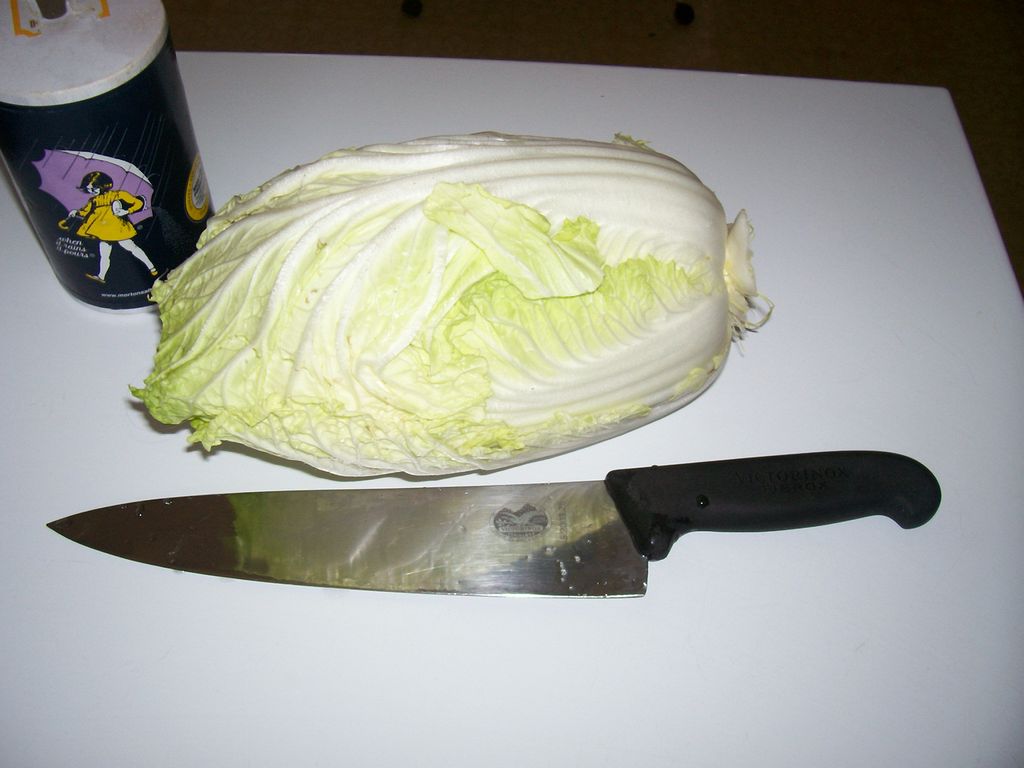

Remove blemished leaves. I tend not to wash in water unless I have time to dry it or let it air dry. Extra water would interfere. Chop the head of cabbage into thick slices across, about 2 to 3 cm (or around an inch to inch-and-a half) thick.
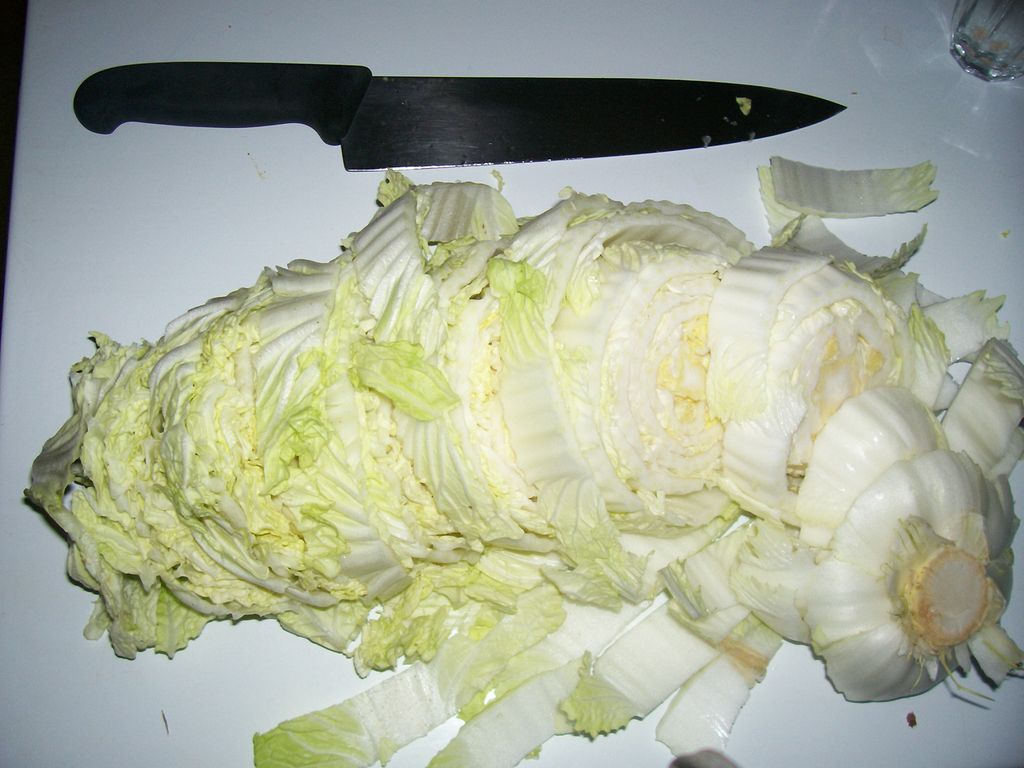

This is a hard one because everyone salts by feel, it seems. I looked high and low and found no exact proportions of salt to cabbage except this "salt should be 2 to 3 percent of the weight of the cabbage". That sounded like a hassle to use, so I just say, sprinkle salt rather than pouring it. Salt the bottom of your container. Lay down a layer of cabbage. Salt the top as if for seasoning any food you want salty enough to season, but not so salty as to be inedible. What type of salt has never mattered that I can tell. Whatever thrills your gorilla, be it sea salt, iodized table salt, fancy french salt; it will still make tsukemono, so it's a personal choice. Lay down another layer, this time frilly leaves if your first layer was thick stems, or thick stems if your first layer was frilly leaves. Sprinkle again. Continue until you are out of cabbage. You can mix it by hand, or leave it layered. It really seems to make no difference, though I have heard others say it does. Here is where I realized that my trusty glass jar wouldn't do, because the cabbage was much springier than the brined kimchi had been, so I really needed something to pack it in that had a wide enough opening to really weight the top evenly. So I transferred it to my 2 Quart plastic square freezer container.
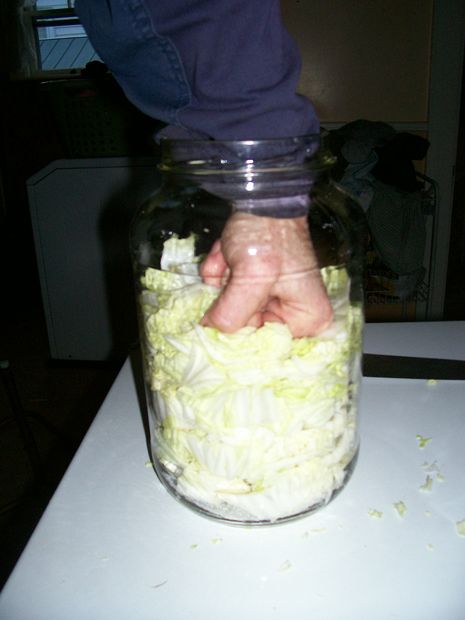
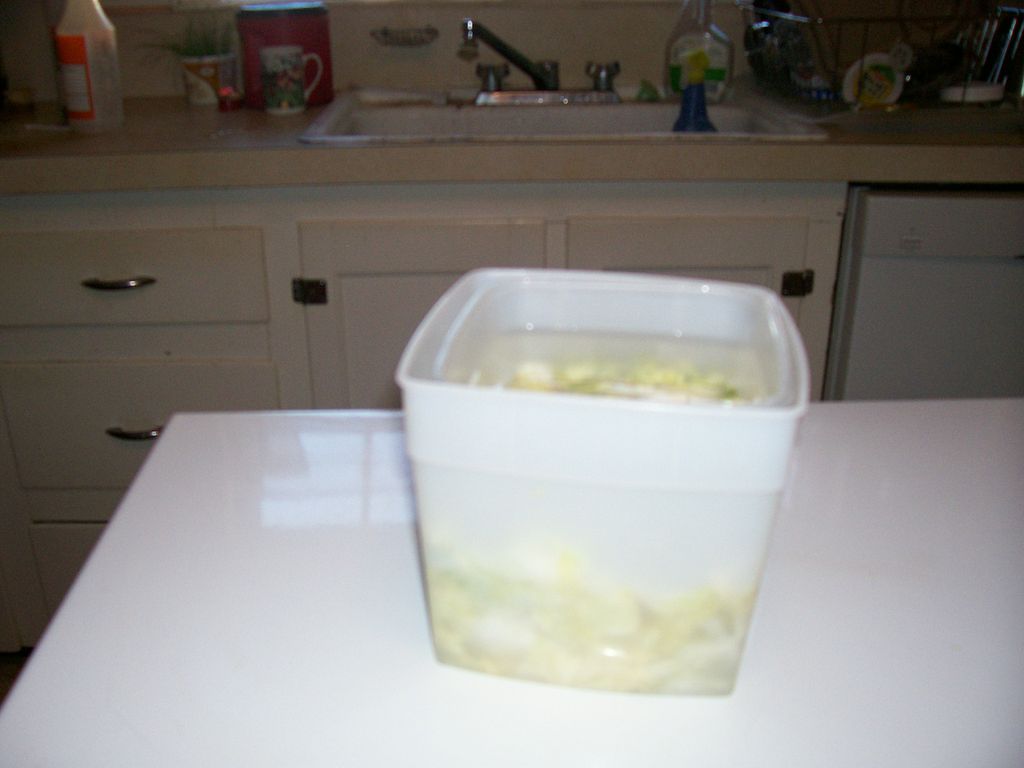


Here I am placing a 1-quart square container that fits neatly atop my 2-quart one. I put water in it as the weight. You won't probably see any liquid rising just yet; but in a few hours to a day, liquid will rise and that weight will keep the cabbage submerged in the resulting brine. Here's the top view also.
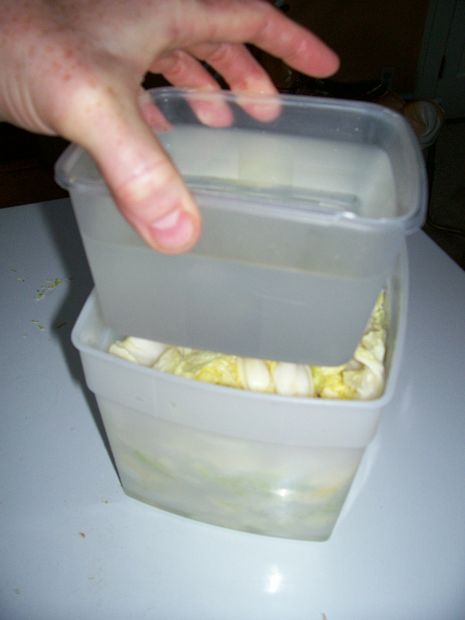
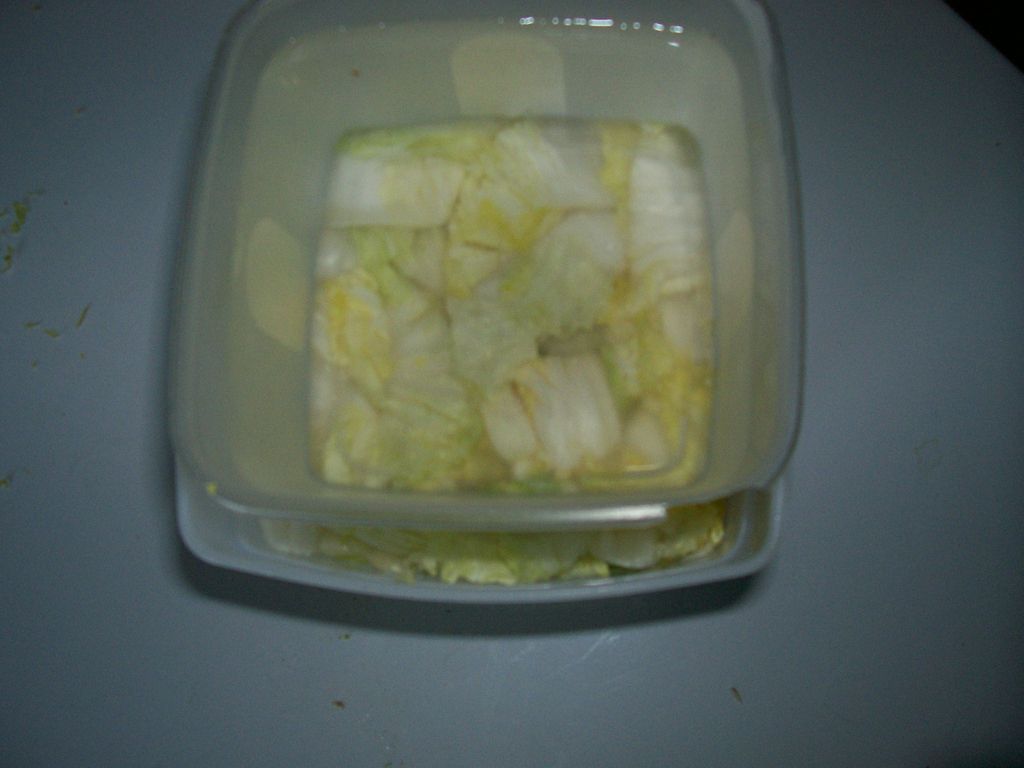


Leave it on the counter up to 3 days.It will "juice out" and the liquid will rise. It may smell a bit like rotting cabbage during this time. Hopefully you have tasted tsukemono before and know that this is normal. If you have never had tsukemono of any type, it may be hard to trust that this is how it is supposed to smell. The salt will guide it to process correctly instead of outright rotting, by encouraging the "good" bacteria that cause the lactic fermentation.Your cabbage will take less space as the liquid rises. See how my top container, that I put on to weight it, has been sinking?
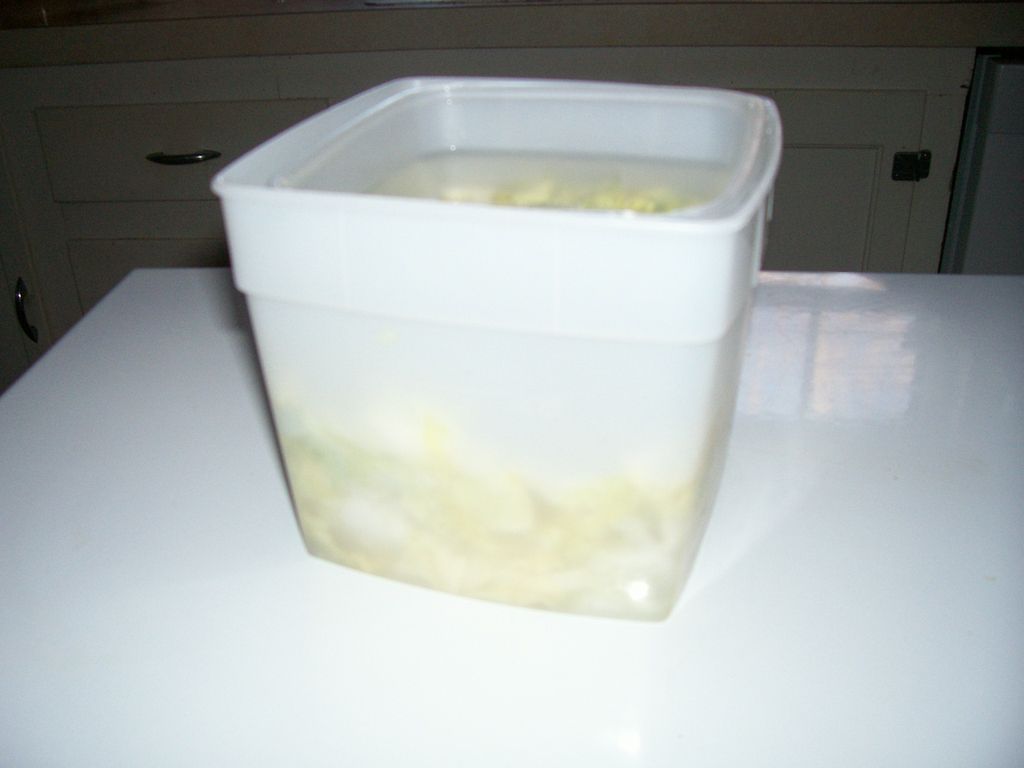

Once it has been fermenting two or three days, it is ready. Maybe sooner if it's really warm in your house... just taste it. It certainly won't hurt to eat it sooner; that is a matter of personal taste.This is basic hakusai no shiozuke at its simplest. Feel free to add soy sauce, garlic, pepper flakes, more vinegar, a touch of sugar or mirin.... you can dress it up however you want, or serve as it is, with rice, cooked meals, in soups, on sandwiches, or as a snack by itself.Just be sure to use it up within the week, and storing in the fridge is probably a good idea to slow further fermentation. Your nose and taste buds will dictate what its useful life is. But as I said, this is quick to make and quick to use. Not a long keeper. More like a daily salad.Congratulations! It should now be an easy leap to start making more tsukemono, like daikon versions, eggplant, ginger, or even mustard greens. I highly recommend the book "Japanese Cooking" by Peter and Joan Martin, a couple who lived in Kyoto for years... the book is from the 1970's, and while it may not have the most up-to-date recipes, it has some old traditional ones that can be hard to find, written in a simple and straighforward manner, plus a guide to special utensils. Short of having an old-school Obaachan to take one in hand and show how to cook from scratch Japanese style, this book is a great resource for the type of traditional family cooking that one seldom sees in the glitzy Japanese cooking mags that tend to show fancier styles and more reliance on prefabricated products not always available elsewhere. The ISBN for this out-of-print book is 0-517-169657.
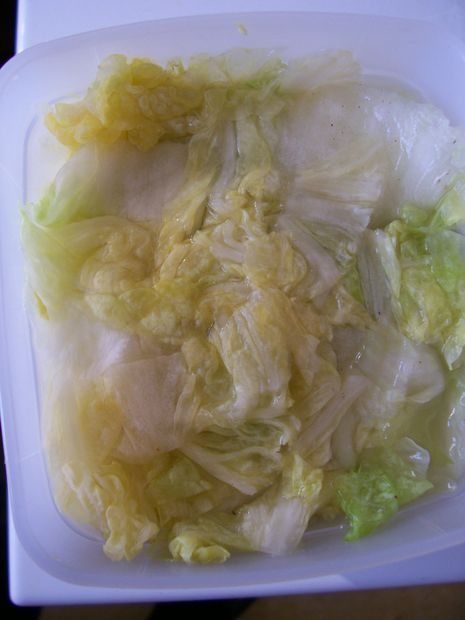
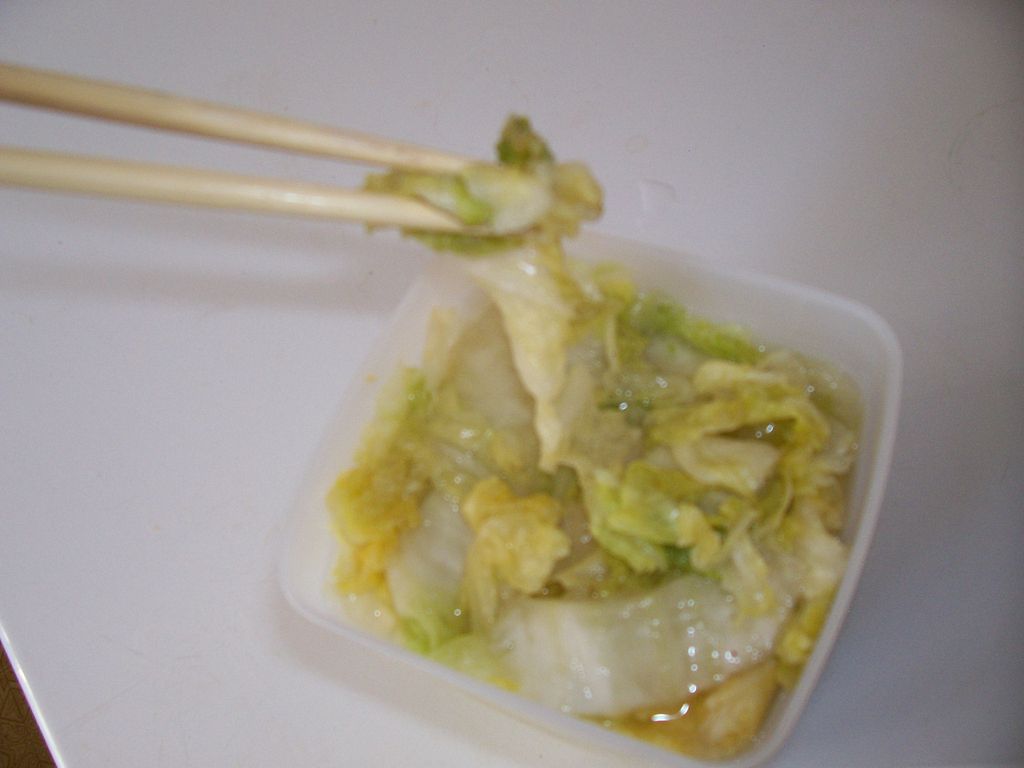


Question & Answer
Question: Choose the best title for the missing blank to correctly complete the recipe.
Tools and Materials
Chop
____________
Weight It Down
Choices:
(A) Pickled Smelt
(B) Layer and Salt
(C) Braising
(D) Browning
 (B) Layer and Salt
(B) Layer and Salt